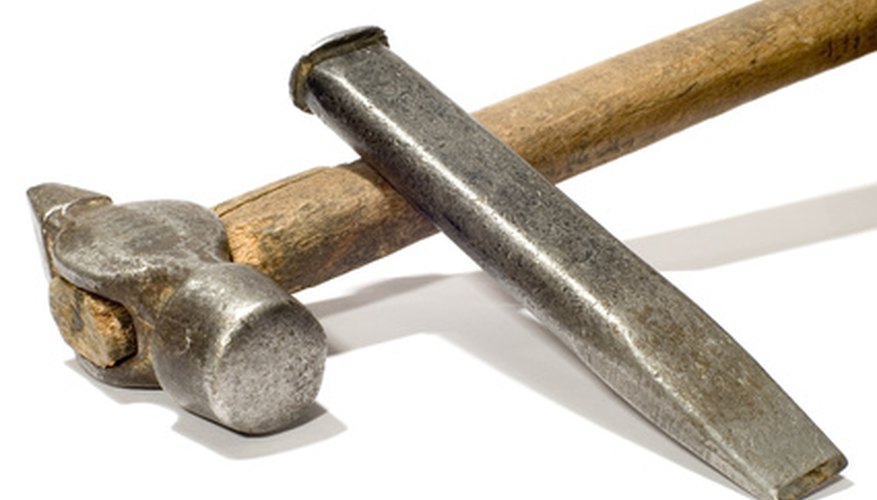The cold chisel derives its name because it is primarily used to work unheated metal components. They are typically made from hexagon-shaped or octagon-shaped treated steel rods. One end is tapered and shaped, and ground to contain a suitably sharp cutting edge. The other end is flat with slightly bevelled edges to withstand repeated hammer blows. The entire cold chisel is heat treated for strength, then the final grinding of the sharpened cutting edge is performed. The specific cutting angle of the blade is related to the type of metal the chisel is to be used upon. Sharpening a cold chisel is not a hard task, and, if done as needed, will keep the chisel in workable condition for many years.
- The cold chisel derives its name because it is primarily used to work unheated metal components.
- The entire cold chisel is heat treated for strength, then the final grinding of the sharpened cutting edge is performed.
Put on eye protection. Make sure your grinding wheel has a metal-capable wheel installed, and is of a fine or very fine rating. Turn on the grinding wheel to the slowest setting possible. Hold the chisel in your hands so that you will be able to hold the cutting end of the chisel against the grinder in a comfortable manner.
Maintain a comfortable stance, then apply the cutting edge of the cold chisel to the side of the grinding wheel. There are two objectives to be met as this is done. The first objective is to not let the cutting end of the chisel become overheated, since this will weaken it substantially. The second objective is to develop a smooth, sharp edge.
- Make sure your grinding wheel has a metal-capable wheel installed, and is of a fine or very fine rating.
- The first objective is to not let the cutting end of the chisel become overheated, since this will weaken it substantially.
Maintain a 45-degree angle between the grinding wheel and the cutting edge of the cold chisel. More or less angle is allowable if that is how the chisel was initially ground. Try to replicate the factory grind by moving the chisel back and forth horizontally across the grinding wheel face, with the angle of contact held constant.
- Maintain a 45-degree angle between the grinding wheel and the cutting edge of the cold chisel.
- Try to replicate the factory grind by moving the chisel back and forth horizontally across the grinding wheel face, with the angle of contact held constant.
Remove the chisel from the wheel frequently so that excessive heat does not build up. Keep checking the face of the chisel until you see that is has a new edge, both smooth and sharp. The new edge should closely replicate the factory edge when you are finished.
Keep moving the chisel across the face of the grinding wheel at a 45-degree (or factory replicated) degree angle. Remove and apply the chisel end to the wheel as necessary to produce the smooth sharp end as desired. Turn off the grinding wheel when finished and wipe down the chisel with a dry rag containing a few drops of light lubricating oil.
WARNING
Properly maintaining the cutting edge of a cold chisel is a safety issue. Dull or chipped edges will prevent successful chisel cuts from being made, causing the chisel to slip or slide rather than cut cleanly. This creates a risk of injury that is avoidable. Chisels should be kept smoothly ground and sharp.
